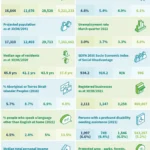
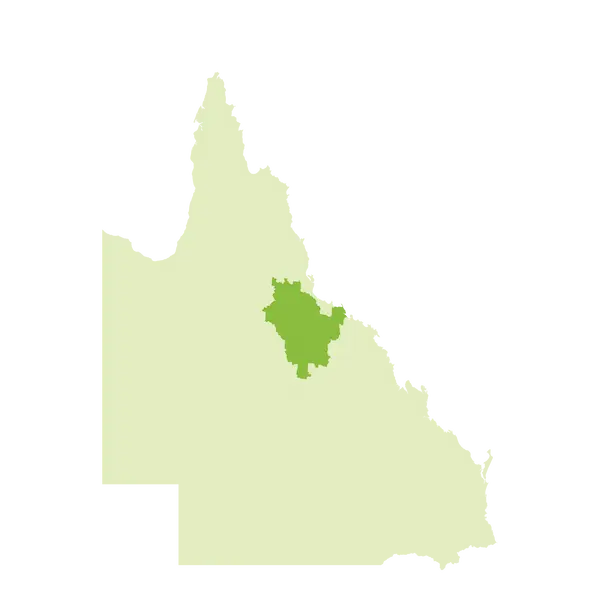
Overview of Burdekin and Charters Towers
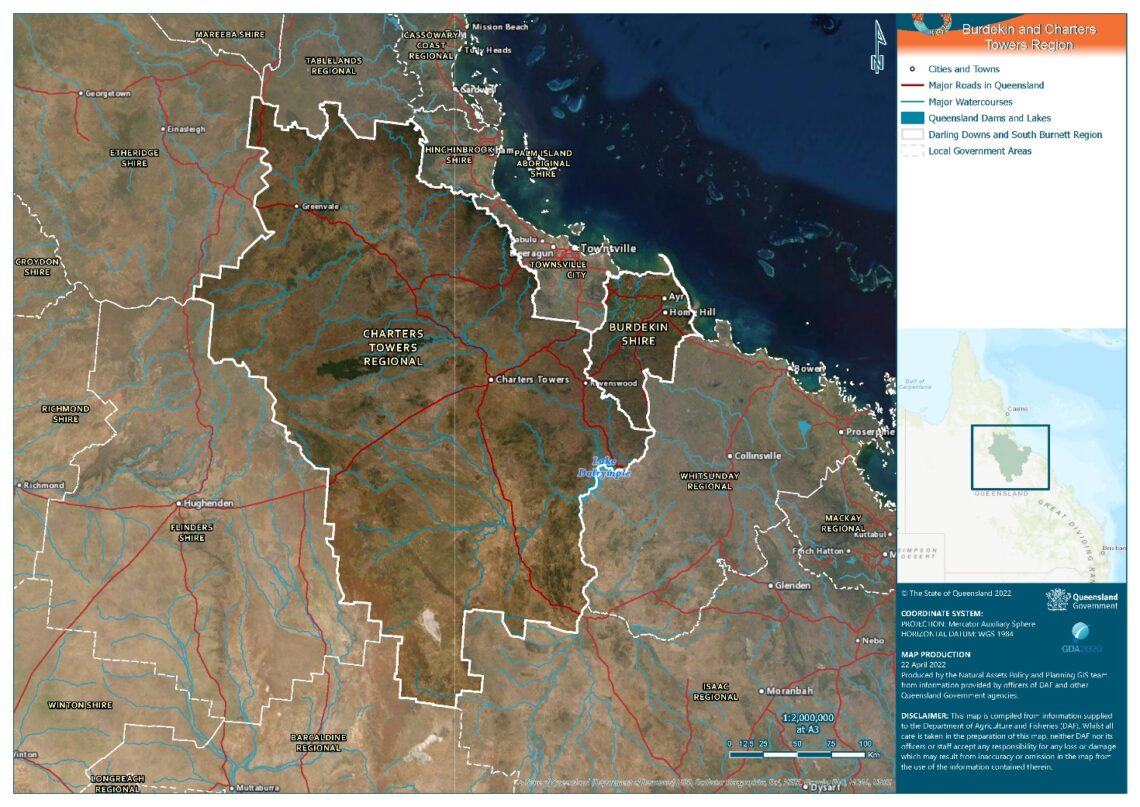
Figure 5: Burdekin and Charters Towers regional map. Source: Department of Agriculture and Fisheries, Queensland Government.
The average daily temperature ranges between 16.70°C to 29.40°C and the average annual rainfall is 657mm. It is home to just under 30,000 people who, statistically, are older and more socially disadvantaged than the Queensland average, but value their regional and remote lifestyle and the communities in which they live.
Past impacts of drought in this region
Past impacts | People, culture and community
EXTRACTS FROM THE FULL RDRP PLAN

Figure 14: LGA Population 2010–2020 noting periods of Drought Declaration. Source: Adapted from informed decisions – id.com.au
The people of the Burdekin and Charters Towers region are not strangers to long dry seasons, failed wet seasons and drought declarations and have built a degree of inherent resilience which should be recognised and built upon.
Disasters and crises are known to alter the liveability of a region and the lifestyle of residents – jobs are lost, amenity decreases, social and commercial opportunities diminish. In rural and remote areas this often leads to an exodus of population chasing better opportunities, often in the city.
“The big issue for rural people with drought or any kind of natural disaster is stigma – weakness of not being able to cope with the situation and the risk of being the one that lost the family farm.”
Sean Winning, TRACC
Past impacts | Economy

Figure 15: Top Employment Industries Burdekin and Charters Towers Region. Source: informed decisions – id.com.au
When the crop or the cattle do not provide a good return – the farmers and graziers spend less, and the town businesses lose income. The townships of Charters Towers and Ayr in the Burdekin are regional business hubs that service a large region which increases the impact of economic downturn caused by drought.
Given the importance of the agricultural industry as an employer across the region the consequences of up to over 20% of agricultural employees losing their jobs, plus the associated supply chain positions, the potential economic impact could only be described as catastrophic.
Past impacts | Landscape and natural environment
EXTRACTS FROM THE FULL RDRP PLAN
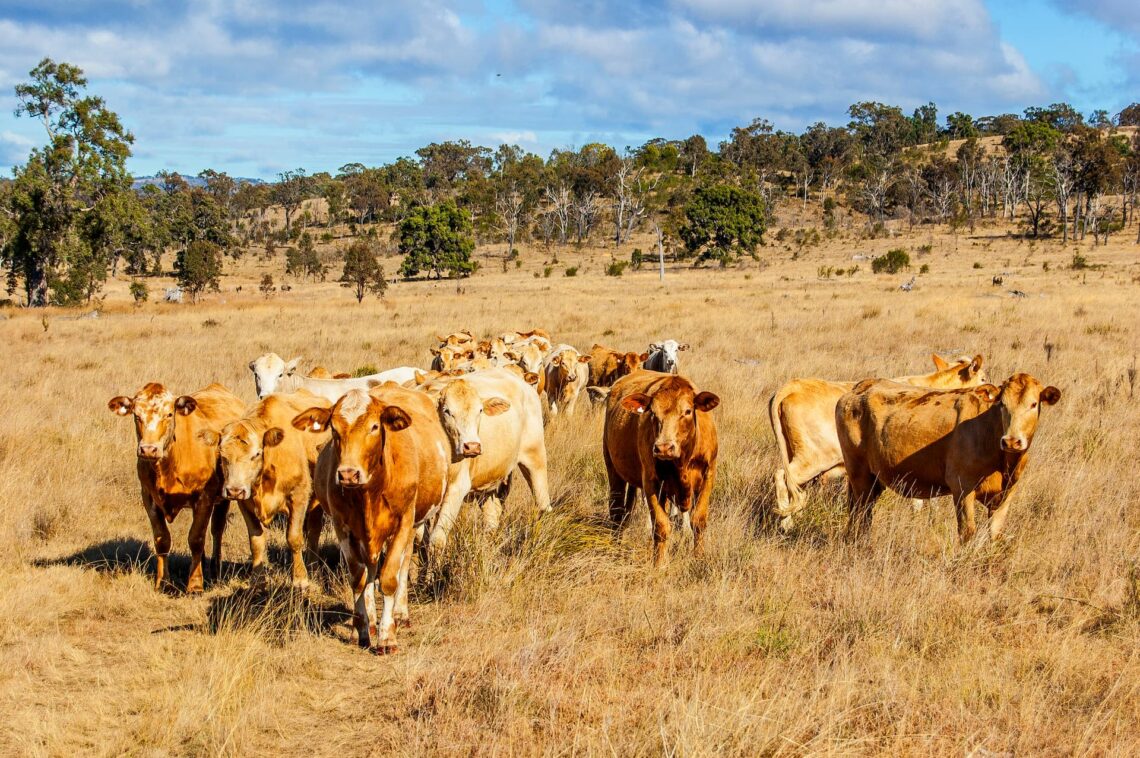
Drought impacts all these natural environments and the plants, animals and people that inhabit them.
Conversations with locals suggest that prolonged dry periods have led to a reduction in ground cover which can be further damaged by over grazing and often leads to an increase in weeds and soil erosion. Dry vegetation provides fuel for bushfires further damaging flora and fauna, and dust storms have played havoc with transmission lines.
Past impacts | Infrastructure and built environment
EXTRACTS FROM THE FULL RDRP PLAN
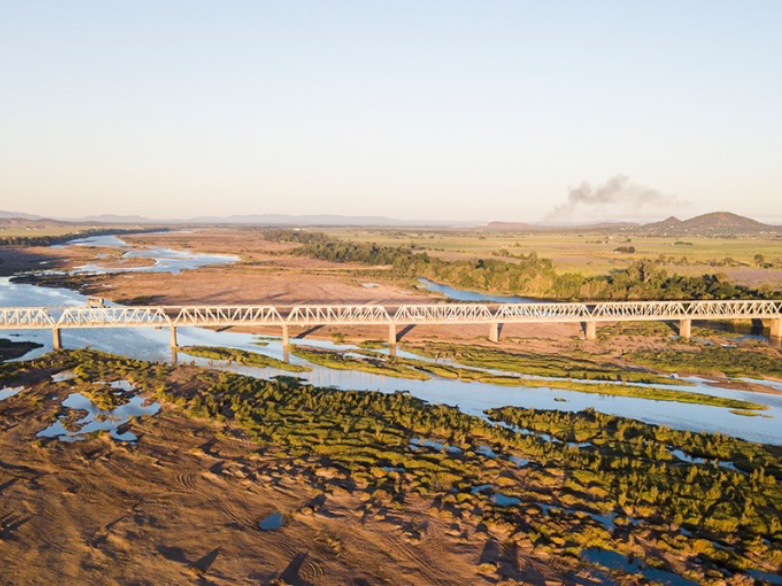
Sunset over the Burdekin Bridge. Source: Burdekin Shire Council
The extremes of heat, humidity and dehydration experienced in a drought are testing on infrastructure such as roads, rail lines and buildings.
Communications and power lines and towers are also compromised by dust storms exacerbated by lengthy periods of drought.
The integrated nature of drought impacts sees the economic and social impacts leading to infrastructure impacts including houses and properties being left unattended, schools reduced or closed and fences, gates, sheds, and equipment severely undermaintained.
Past impacts | People, culture and community
EXTRACTS FROM THE FULL RDRP PLAN

Figure 14: LGA Population 2010–2020 noting periods of Drought Declaration. Source: Adapted from informed decisions – id.com.au
The people of the Burdekin and Charters Towers region are not strangers to long dry seasons, failed wet seasons and drought declarations and have built a degree of inherent resilience which should be recognised and built upon.
Disasters and crises are known to alter the liveability of a region and the lifestyle of residents – jobs are lost, amenity decreases, social and commercial opportunities diminish. In rural and remote areas this often leads to an exodus of population chasing better opportunities, often in the city.
“The big issue for rural people with drought or any kind of natural disaster is stigma – weakness of not being able to cope with the situation and the risk of being the one that lost the family farm.”
Sean Winning, TRACC
Past impacts | Economy

Figure 15: Top Employment Industries Burdekin and Charters Towers Region. Source: informed decisions – id.com.au
When the crop or the cattle do not provide a good return – the farmers and graziers spend less, and the town businesses lose income. The townships of Charters Towers and Ayr in the Burdekin are regional business hubs that service a large region which increases the impact of economic downturn caused by drought.
Given the importance of the agricultural industry as an employer across the region the consequences of up to over 20% of agricultural employees losing their jobs, plus the associated supply chain positions, the potential economic impact could only be described as catastrophic.
Past impacts | Landscape and natural environment
EXTRACTS FROM THE FULL RDRP PLAN

Drought impacts all these natural environments and the plants, animals and people that inhabit them.
Conversations with locals suggest that prolonged dry periods have led to a reduction in ground cover which can be further damaged by over grazing and often leads to an increase in weeds and soil erosion. Dry vegetation provides fuel for bushfires further damaging flora and fauna, and dust storms have played havoc with transmission lines.
Past impacts | Infrastructure and built environment
EXTRACTS FROM THE FULL RDRP PLAN

Sunset over the Burdekin Bridge. Source: Burdekin Shire Council
The extremes of heat, humidity and dehydration experienced in a drought are testing on infrastructure such as roads, rail lines and buildings.
Communications and power lines and towers are also compromised by dust storms exacerbated by lengthy periods of drought.
The integrated nature of drought impacts sees the economic and social impacts leading to infrastructure impacts including houses and properties being left unattended, schools reduced or closed and fences, gates, sheds, and equipment severely undermaintained.
Likely future impacts of drought in this region
Future impacts | People and community
Droughts have complex community impacts that can vary within the community but also over time, with impacts being both felt in the short and long term.
In terms of the people and community of Burdekin and Charters Towers, the risks associated with future droughts will be felt as both tangible and intangible costs (Deloitte Access Economics, 2016).
Future impacts can be broadly partitioned into the following significant impacts areas:
- Health and wellbeing
- Social cohesion and connectedness
- Amenities and quality of life
- Population growth.
Future impacts | Economy
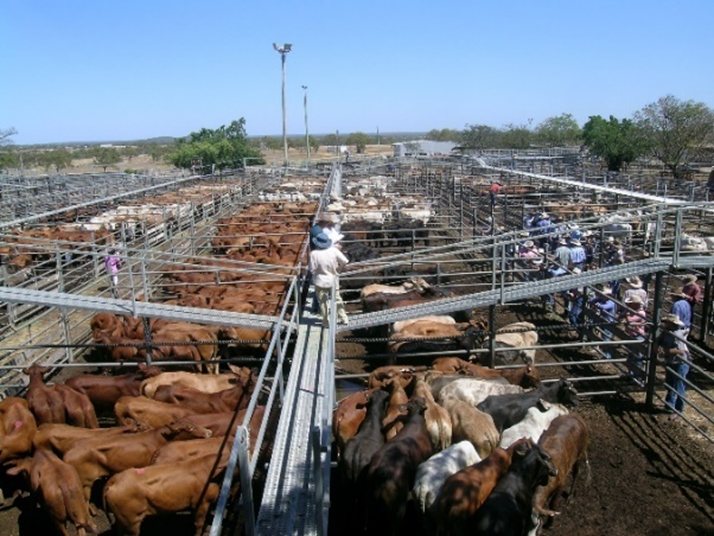
Cattle Saleyards. Source: Charters Towers Regional Council.
The impact of drought within the Burdekin and Charters Towers region will create substantial challenges for both individual businesses and the local economy.
As previously mentioned, the largest industry within this region is agriculture, which is sensitive to both climate impacts and commodity prices.
Within the Burdekin and Charters Towers region, three important industries that will be affected are sugar cane, cattle, and cropping
Future impacts | Landscape and natural environment
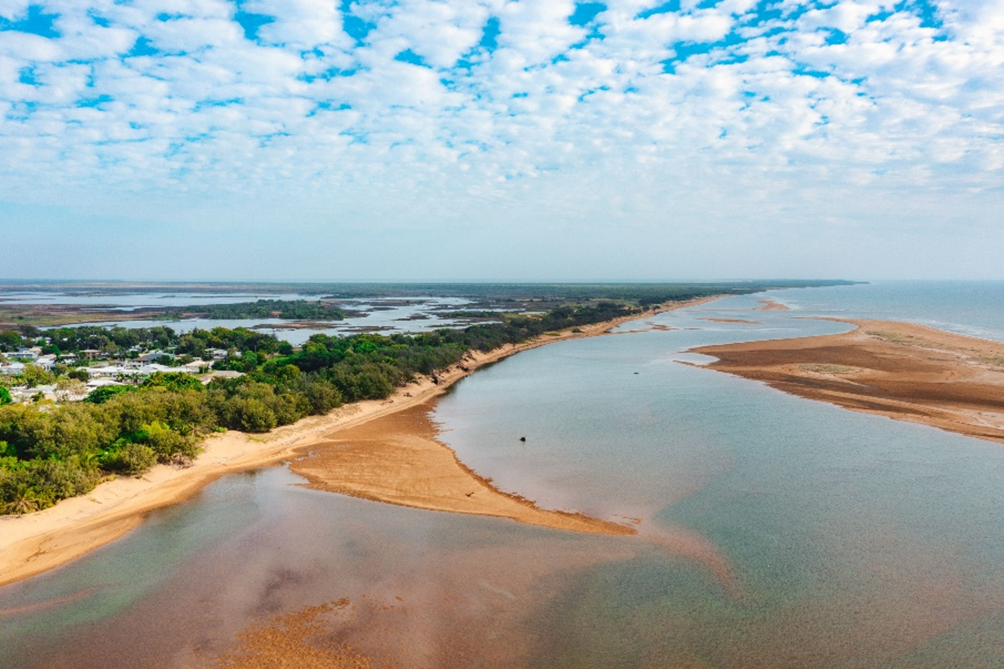
Burdekin Delta. Source: Burdekin Shire Council.
Any future drought will have an immediate and direct effect on the landscape and natural environment. In the event of a future drought, it is expected to observe:
- increased bushfire risk
- reduced ground cover
- biodiversity impacts (loss of habitat)
- increased aquifer salinity
- degradation of existing waterways.
Future impacts | Infrastructure and built environment
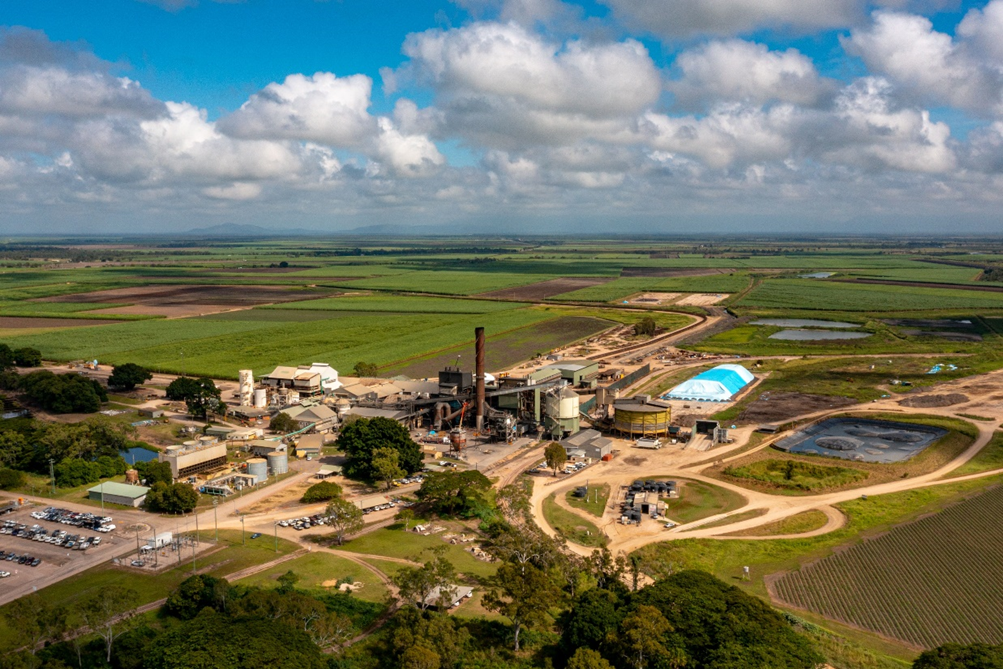
Sugar Mill. Source: Burdekin Shire Council.
The risks can be separated to immediate and longer-term risk to infrastructure.
In terms of immediate risks, drought poses problems of associated heat damage to infrastructure, such as rail lines and roads, as well as increased risks of dust storms that interfere with high voltage power distribution.
With respect to longer term risks, the implication of future droughts results in lower incentives for investors and developers to relocate to the Burdekin and Charters Towers regions. With uncertain water supply – that may increase in uncertainty over time – costly and long-term capital decisions, with increasing depreciation rates, will be difficult to make
Future impacts | People and community
Droughts have complex community impacts that can vary within the community but also over time, with impacts being both felt in the short and long term.
In terms of the people and community of Burdekin and Charters Towers, the risks associated with future droughts will be felt as both tangible and intangible costs (Deloitte Access Economics, 2016).
Future impacts can be broadly partitioned into the following significant impacts areas:
- Health and wellbeing
- Social cohesion and connectedness
- Amenities and quality of life
- Population growth.
Future impacts | Economy

Cattle Saleyards. Source: Charters Towers Regional Council.
The impact of drought within the Burdekin and Charters Towers region will create substantial challenges for both individual businesses and the local economy.
As previously mentioned, the largest industry within this region is agriculture, which is sensitive to both climate impacts and commodity prices.
Within the Burdekin and Charters Towers region, three important industries that will be affected are sugar cane, cattle, and cropping
Future impacts | Landscape and natural environment

Burdekin Delta. Source: Burdekin Shire Council.
Any future drought will have an immediate and direct effect on the landscape and natural environment. In the event of a future drought, it is expected to observe:
- increased bushfire risk
- reduced ground cover
- biodiversity impacts (loss of habitat)
- increased aquifer salinity
- degradation of existing waterways.
Future impacts | Infrastructure and built environment

Sugar Mill. Source: Burdekin Shire Council.
The risks can be separated to immediate and longer-term risk to infrastructure.
In terms of immediate risks, drought poses problems of associated heat damage to infrastructure, such as rail lines and roads, as well as increased risks of dust storms that interfere with high voltage power distribution.
With respect to longer term risks, the implication of future droughts results in lower incentives for investors and developers to relocate to the Burdekin and Charters Towers regions. With uncertain water supply – that may increase in uncertainty over time – costly and long-term capital decisions, with increasing depreciation rates, will be difficult to make
Regional strategy
Progressing and implementing a whole of catchment approach to achieving water security for the Burdekin and Charters Towers region.

Economic outcomes
Improved resilience of local economies and businesses to drought impacts.

Environmental outcomes
Protection of key environmental values in the Burdekin catchment.

Social and cultural outcomes
Protection of cultural values in water.

Governance outcomes
Improved coordination and regional governance for achieving water security.
Business and sector development for economic diversification and resilience.

Economic outcomes
Improved resilience of local economies and businesses to drought impacts.

Environmental outcomes
More efficient use of water and natural resources within businesses.

Social and cultural outcomes
Increased social resilience and cohesion within our communities.

Governance outcomes
Improved drought support coordination and regional governance for drought resilience.
Boosting innovation and agricultural technology for drought resilience.

Economic outcomes
Improved resilience of local economies and businesses to drought impacts.

Environmental outcomes
More efficient use of water and natural resources and investment into sustainable economies and communities.

Social and cultural outcomes
Increased social resilience and cohesion within our communities and innovation in the protection of cultural values.

Governance outcomes
Improved coordination and regional governance for drought resilience.
Address drought related workforce disruption, skills, labour and housing shortages.

Economic outcomes
Improved resilience of local communities and businesses to drought impacts.

Environmental outcomes
More efficient use of water and natural resources and investment into new sustainable industries.

Social and cultural outcomes
Increased social resilience and cohesion, and integration of cultural considerations in workforce development

Governance outcomes
Improved coordination and regional governance of workforce development for drought resilience.
Building community and personal resilience.

Economic outcomes
Improved individual, family and business resilience.

Environmental outcomes
Prevention of acute environmental and animal welfare problems arising from distress.

Social and cultural outcomes
Increased social resilience and cohesion.

Governance outcomes
Improved coordination and regional governance for all aspects of drought resilience.
Improving the Regional Governance Capacity within the Region to Plan, Deliver and Monitor Progress Towards Regional Drought Resilience.

Economic outcomes
Early action to reduce the economic impacts of drought.

Environmental outcomes
Prevention of acute environmental and animal welfare problems arising from drought onset.

Social and cultural outcomes
Increased social resilience and cohesion across the drought governance system.

Governance outcomes
Improved coordination and regional governance for drought resilience.
Progressing and implementing a whole of catchment approach to achieving water security for the Burdekin and Charters Towers region.

Economic outcomes
Improved resilience of local economies and businesses to drought impacts.

Environmental outcomes
Protection of key environmental values in the Burdekin catchment.

Social and cultural outcomes
Protection of cultural values in water.

Governance outcomes
Improved coordination and regional governance for achieving water security.
Business and sector development for economic diversification and resilience.

Economic outcomes
Improved resilience of local economies and businesses to drought impacts.

Environmental outcomes
More efficient use of water and natural resources within businesses.

Social and cultural outcomes
Increased social resilience and cohesion within our communities.

Governance outcomes
Improved drought support coordination and regional governance for drought resilience.
Boosting innovation and agricultural technology for drought resilience.

Economic outcomes
Improved resilience of local economies and businesses to drought impacts.

Environmental outcomes
More efficient use of water and natural resources and investment into sustainable economies and communities.

Social and cultural outcomes
Increased social resilience and cohesion within our communities and innovation in the protection of cultural values.

Governance outcomes
Improved coordination and regional governance for drought resilience.
Address drought related workforce disruption, skills, labour and housing shortages.

Economic outcomes
Improved resilience of local communities and businesses to drought impacts.

Environmental outcomes
More efficient use of water and natural resources and investment into new sustainable industries.

Social and cultural outcomes
Increased social resilience and cohesion, and integration of cultural considerations in workforce development

Governance outcomes
Improved coordination and regional governance of workforce development for drought resilience.
Building community and personal resilience.

Economic outcomes
Improved individual, family and business resilience.

Environmental outcomes
Prevention of acute environmental and animal welfare problems arising from distress.

Social and cultural outcomes
Increased social resilience and cohesion.

Governance outcomes
Improved coordination and regional governance for all aspects of drought resilience.
Improving the Regional Governance Capacity within the Region to Plan, Deliver and Monitor Progress Towards Regional Drought Resilience.

Economic outcomes
Early action to reduce the economic impacts of drought.

Environmental outcomes
Prevention of acute environmental and animal welfare problems arising from drought onset.

Social and cultural outcomes
Increased social resilience and cohesion across the drought governance system.

Governance outcomes
Improved coordination and regional governance for drought resilience.
